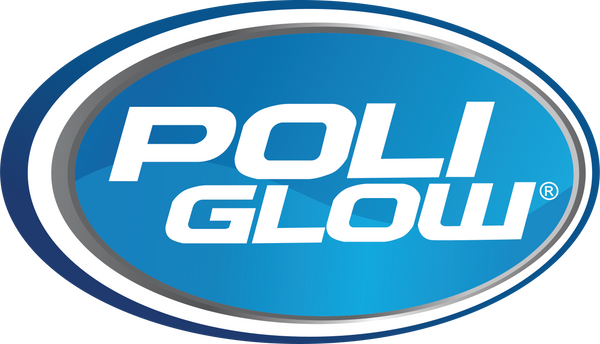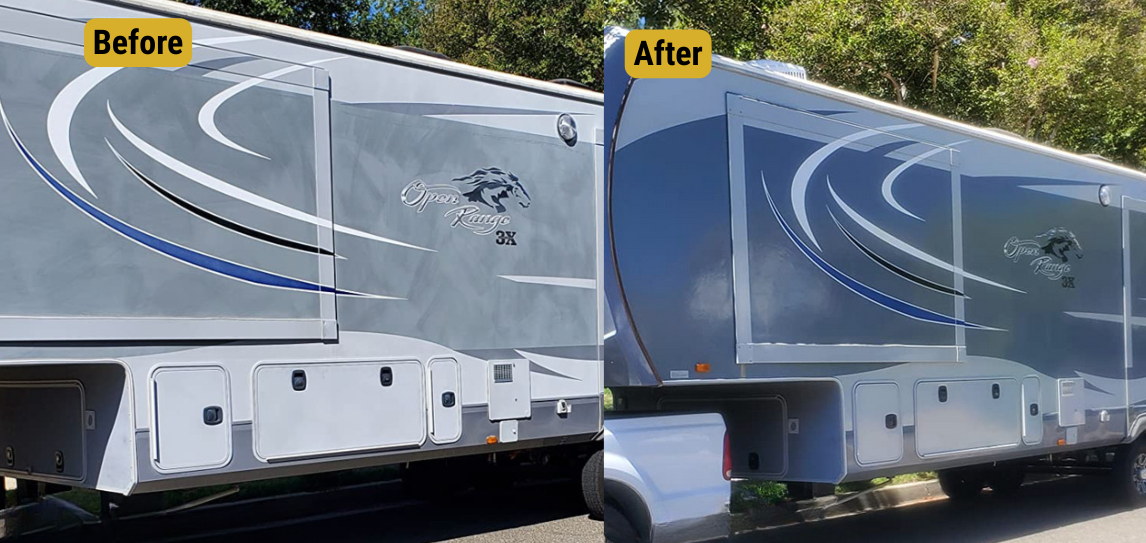
The Ultimate Guide to Boat Detailing: Tips, Techniques, and Products
Time to read 13 min
Boat detailing involves a comprehensive cleaning and maintenance process that aims to restore and enhance the appearance of your vessel, both inside and out. It goes beyond a simple wash and involves meticulous attention to detail, ensuring that every nook and cranny of your boat is thoroughly cleaned, polished, and protected. By regularly detailing your boat, you can preserve its aesthetic appeal, extend its lifespan, enhance performance, and maintain its value.
In this blog post, we will delve into the importance of regular boat maintenance and detailing, explore the essential boat detailing and cleaning tools and supplies, guide you through the process of preparing your boat for professional detailing service, and provide techniques for detailing the exterior, interior, and below the waterline. Additionally, we will offer tips and considerations for detailing different types of boats, helping you achieve professional-level results.
Importance of Regular Boat Maintenance and Detailing
Regular maintenance and detailing are essential for preserving the boat's condition, safety, and value. A crucial aspect of maintenance and detailing is to help prevent the accumulation of dirt, salt, grime, and other contaminants that can gradually deteriorate your boat's exterior and interior surfaces.
Detailing your boat on a regular basis is crucial for several reasons:
- Prolonging the Life of the Boat: Regular inspections and servicing of the engine, hull, electrical systems, and other parts can detect and resolve issues early, preventing costly repairs and premature component replacements.
- Preserving Resale Value: Regularly detailed and well-maintained boats retain their value better, making them more attractive to potential buyers when it's time to sell or trade.
- Enhancing Performance and Safety: Boats that receive regular maintenance perform better and are safer on the water, reducing the risk of breakdowns and accidents.
- Preventing Corrosion and Damage: Marine environments, especially saltwater, can cause corrosion and deterioration of boat materials. Regular boat detailing and protective treatments like waxing shield the surfaces from these elements.
- Improving Fuel Efficiency: Well-maintained engines and hulls operate more efficiently, leading to better fuel economy. Keeping the hull clean reduces drag, allowing the boat to move through water with less resistance.
- Compliance with Warranty Requirements: Following recommended maintenance schedules and keeping detailed records ensures that the boat remains eligible for warranty coverage.
- Preventing Mold and Mildew: Regular cleaning and ventilation prevent moisture buildup and the growth of mold and mildew in interior spaces.
- Enjoyment and Pride of Ownership: A well-maintained boat brings pride to its owner and enhances the boating experience, allowing for worry-free enjoyment on the water.
Essential Boat Detailing Tools and Supplies
Boat detailing requires a range of tools and supplies to clean, protect, and maintain the vessel effectively. Here are essential items for boat detailing:
- Boat Wash Soap: Use gentle boat-specific wash soap to remove dirt, grime, and salt deposits from surfaces.
- Microfiber Wash Mitts and Towels: Use microfiber materials to clean gently without scratching boat surfaces. Wash mitts for washing and towels for drying.

- Boat Brushes: Different types for different surfaces - soft-bristled brushes for delicate areas and stiffer brushes for tough stains and marine growth on the hull.
- Boat Polish and Compound: Polish for restoring shine and removing light oxidation, and compound for heavier oxidation and scratches.
- Dual Action Polisher: Efficiently applies polish and wax for more extensive boat detailing.
- Boat Wax/Sealant: Applied after polishing to protect surfaces from UV rays and environmental factors.
- Vinyl Cleaner and Conditioner: Clean vinyl upholstery and surfaces with a cleaner, then use a conditioner to prevent cracking.
- Glass Cleaner: Non-ammonia-based for safe cleaning of windows and windshields without damage.
- Metal Polish: Restores shine and remove oxidation from metal components like stainless steel rails.
- Bilge Cleaner: Specialized for removing oil, grease, and grime from the engine compartment and bilge.
- Marine-grade All-Purpose Cleaner: Safe for various cleaning tasks onboard.
- Applicator Pads: Use foam pads for applying wax and sealants evenly.
- Gel Coat Restorer/Color Restorer: Brings back color and shine for older boats with faded gel coats.
- Protective Gloves: Shields hands from chemicals and prevents oil transfer onto surfaces.
- Bucket and Hose: A bucket with a grit guard and a hose with a spray nozzle for effective washing and rinsing.
With these essential tools and supplies, you can confidently tackle boat detailing and achieve professional results. Follow the manufacturer's instructions and opt for marine-grade and boat-specific items for safe and effective boat detailing.
How to Prepare Your Boat for Detailing?
Properly preparing your boat before detailing is crucial for a successful and efficient process. Here's a step-by-step guide:
- Remove Personal Belongings: Take out all personal items, gear, and equipment from the boat's interior to clear the workspace.
- Inspect for Damage: Carefully inspect the boat for any scratches, dents, cracks, or damage that needs attention before detailing.
- Clean Out Storage Compartments: Empty and clean all storage compartments, lockers, and cabinets to remove debris and moisture.
- Remove Grime and Heavy Dirt: Rinse off loose dirt, grime, and salt deposits from the boat's exterior using a hose or pressure washer.
- Scrub Decks and Non-Skid Surfaces: Use a boat-safe cleaner and soft-bristled brush to scrub the decks and non-skid surfaces to remove stubborn stains and dirt.
- Clean Canvas Tops and Covers: If applicable, clean canvas tops or covers with a specialized cleaner following the manufacturer's recommendations.
- Clean Vinyl Upholstery: Use a boat-specific vinyl cleaner to clean vinyl upholstery and remove stains or mildew.
- Clean Glass and Windows: Use a non-ammonia-based glass cleaner to clean all windows inside and outside the boat.
- Remove Marine Growth from Hull: If present, use a scraper or brush designed for the purpose of removing marine growth from the hull before washing.
- Wash the Boat Thoroughly: Wash the entire boat using a boat wash soap and a microfiber wash mitt, starting from the top and working down.
- Rinse Thoroughly: Rinse the boat with clean water to remove soap residue.
- Dry the Boat: Use dry microfiber towels to dry the boat's exterior surfaces, including the hull and decks.
- Inspect Again: Perform another inspection to ensure all areas are clean and ready for detailing.
Properly preparing your boat ensures a more effective and successful detailing process, leaving your boat looking its best and well-maintained for your future boating adventures.
Boat Detailing
Boat detailing is a comprehensive cleaning and restoration process performed on boats to maintain or restore their appearance and overall condition. Just like car detailing, boat detailing involves deep cleaning and protection of various surfaces, but it’s specifically tailored to meet the unique needs of marine vessels.

Exterior Boat Detailing
Exterior boat detailing involves a comprehensive cleaning, polishing, and protection process to restore and maintain the boat's exterior surfaces. Here's a step-by-step guide on how to perform exterior boat detailing:
- Rinse the Boat: Start by rinsing the entire boat with a hose or pressure washer to remove loose dirt, grime, and salt deposits from the exterior surfaces.
- Pre-Treat Stubborn Stains: If there are any stubborn stains or areas with heavy grime, apply a specialized boat cleaning product or degreaser to those spots. Let the cleaner sit for a few minutes to break down the dirt.
- Wash the Boat: Use a boat-specific wash soap and a soft microfiber wash mitt to wash the exterior surface from top to bottom. Start with the upper sections and work down to the hull, ensuring you thoroughly clean every surface. Pay attention to crevices, corners, and hard-to-reach areas.
- Scrub Non-Skid Surfaces: Use a soft-bristled brush to scrub and remove any dirt and stains for non-skid surfaces on the decks. Use a boat-safe cleaner to assist with the process.
- Clean Glass and Windows: Use a non-ammonia-based glass cleaner to clean all windows and glass surfaces inside and outside the boat. Be gentle to avoid damaging any tint or plastic materials.
- Remove Marine Growth from Hull: If there are any algae, barnacles, or other marine growth on the hull, use a scraper or brush specifically designed for this purpose to remove it.
- Polish the Gel Coat: If your boat's gel coat (fiberglass) has minor oxidation or dullness, consider using a boat polish to restore shine and improve the appearance. Apply the polish using a dual-action polisher or by hand, following the product's instructions.
- Compound for Heavier Oxidation: For more severe oxidation or scratches on the gel coat, use a boat-specific compound with a dual-action polisher or by hand to remove the imperfections. Be cautious not to overdo it, as excessive compounding can damage the gel coat.
- Apply Boat Wax/Sealant: Once the gel coat is clean and polished, apply a boat wax or sealant to protect the surfaces from UV rays, saltwater, and other environmental elements. Use foam applicator pads to apply the wax or sealant evenly.
- Clean and Polish Metal Components: Use metal polish to restore shine and remove oxidation from metal components such as stainless steel rails, cleats, and fittings.
- Clean Canvas Tops and Covers: If your boat has canvas tops or covers, clean and treat them with a specialized canvas cleaner and protector.
- Inspect and Touch Up: After completing the detailing process, inspect the boat's exterior for any missed spots or areas that require further attention. Touch up as needed to ensure a consistent and thorough detailing job.
Proper exterior boat detailing enhances the boat's appearance and helps protect it from the elements, and preserves its value over time.
Interior Boat Detailing
The interior of your boat is just as important as its exterior when it comes to boat detailing. Interior boat detailing involves thoroughly cleaning and restoring the boat's interior spaces, including the cabin, upholstery, carpets, and various surfaces. Here's a step-by-step guide on how to perform interior boat detailing:
- Remove Personal Belongings: Before starting the detailing process, remove all personal belongings, gear, and equipment from the boat's interior. This allows you to access all areas easily and cleanly without obstructions.
- Vacuum the Interior: Use a vacuum cleaner with upholstery and crevice attachments to remove loose dirt, dust, and debris from the cabin, seats, and carpets.
- Clean and Treat Vinyl Upholstery: Use a boat-specific vinyl cleaner to clean vinyl upholstery, such as seats, cushions, and bolsters. For stubborn stains, use a soft scrub brush. Once clean, apply a vinyl conditioner to keep the vinyl soft and prevent cracking.
- Clean Fabric Upholstery: If your boat has fabric seats or cushions, use an upholstery cleaner designed explicitly for fabric surfaces. Test the cleaner on a small inconspicuous area first to ensure it doesn't damage the material. Remove any stains or odors as needed.
- Clean and Condition Leather Surfaces: If your boat has leather seats or accents, use a leather cleaner and conditioner to clean and moisturize the leather, keeping it supple and preventing it from drying out or cracking.
- Clean Carpets and Mats: Use a boat-safe carpet cleaner to clean any carpets or floor mats in the boat's interior. Scrub the carpets with a soft brush to remove stubborn stains.
- Clean and Disinfect Hard Surfaces: Clean hard surfaces such as countertops, dashboards, and tables with a boat-specific all-purpose cleaner. Disinfect surfaces to eliminate any harmful bacteria or germs that might be present.
- Clean and Polish Wood Surfaces: If your boat has wood accents or furniture, use a boat-specific wood cleaner to clean and polish the wood surfaces, bringing back their natural shine.
- Clean Windows and Mirrors: Use a non-ammonia-based glass cleaner to clean all windows and mirrors on the boat's interior, ensuring clear visibility.
- Dust and Wipe Down Electronics: Dust and wipe down electronic components, such as navigation screens, stereo systems, and control panels, using a soft, lint-free cloth.
- Clean and Disinfect Galley and Head (if applicable): If your boat has a galley (kitchen) or a head (bathroom), clean and disinfect these areas thoroughly, paying special attention to surfaces that come into contact with food or water.
- Clean Interior Storage Compartments: Empty and clean all storage compartments, lockers, and cabinets in the boat's interior. Remove any debris, dirt, or moisture that might be present.
- Ventilate the Interior: After cleaning, allow the boat's interior to air out and dry, especially if you use any cleaning products that emit fumes.
- Reorganize and Restock: Once the boat's interior is clean and dry, reorganize and restock it with necessary items, keeping everything tidy and easily accessible.
Interior boat detailing helps create a comfortable and inviting space for the boat owner and its passengers and enhances the overall boating experience. Regular interior cleaning and maintenance will keep it in top condition and ensure you enjoy your time on the water to the fullest.
Detailing Below the Waterline
Detailing below the waterline is a crucial part of boat maintenance, as this area is consistently exposed to harsh conditions. Proper cleaning and maintenance improve boat performance, reduce fuel consumption, and prevent damage to the hull and submerged components. Here's a guide on how to perform detailing below the waterline:
- Haul Out the Boat: Take the boat out of the water at a boatyard or marina with appropriate facilities.
- Inspect the Hull: Carefully inspect the hull for damage, scratches, blisters, or areas needing repair. Note down any issues to address later.
- Pressure Wash: Use a pressure washer to remove marine growth, algae, and debris from the hull and underwater surfaces. Be cautious not to damage the gel coat or paint.
- Scrape and Clean: Use a specialized hull scraper or brush to remove any remaining stubborn marine growth or barnacles.
- Sand and Smooth (If Needed): If there are rough or damaged areas on the hull, sand and smooth them for repair and painting.
- Inspect and Repair: Address any hull damage, blisters, or scratches to ensure the hull is in optimal condition.
- Apply Antifouling Paint: Apply antifouling paint to prevent marine growth and enhance boat performance and fuel efficiency.
- Zinc Anode Inspection and Replacement: Inspect and replace zinc anodes to protect underwater metal components from corrosion.
- Inspect Through-Hull Fittings: Check through-hull fittings for leaks, damage, or blockages and ensure they are functioning correctly.
- Inspect Propellers and Running Gear: Examine propellers, shafts, struts, and other running gear for damage, corrosion, or bending.
- Apply Propeller Coating (Optional): Apply a specialized coating to reduce fouling and improve performance.
- Inspect and Clean Trim Tabs (If Applicable): Inspect and clean trim tabs, ensuring they are functioning properly.
- Inspect and Clean Bow Thrusters (If Applicable): Inspect and clean bow thrusters to ensure they are free from debris and functioning.
- Apply Hull Polish or Protector (Optional): Apply a specialized hull polish or protector for additional protection and shine.
- Launch the Boat: Carefully lower the boat back into the water after completing the detailing.
For those unfamiliar or lacking experience, it's best to seek professional assistance from boatyards or marine service providers to ensure a thorough and safe detailing process.
Tips for Detailing Different Types of Boats
Boats come in various shapes, sizes, materials, and finishes. Therefore, it is essential to consider the specific requirements of your boat when detailing. Here are some tips for detailing different types of boats:
-
Fiberglass Boats:
- Use boat-specific cleaners and polishes designed for fiberglass to avoid damage to the gel coat.
- Pay extra attention to the gel coat's condition. Apply polish or compound to restore shine and remove oxidation as needed.
- Apply a high-quality wax or sealant to protect the gel coat from UV rays and environmental elements.
-
Aluminum Boats:
- Use non-abrasive cleaners to avoid scratching the aluminum surfaces.
- Rinse thoroughly after washing to prevent water spots.
- Apply a marine-grade aluminum polish to restore shine and protect against oxidation.
-
Wooden Boats:
- Be gentle when cleaning wooden surfaces to avoid damaging the wood or finish.
- Use wood-specific cleaners and polishes to enhance the wood's natural beauty.
- Apply a high-quality marine-grade wood sealer or varnish to protect the wood from water and UV damage.
-
Inflatable Boats:
- Use mild cleaners to avoid damaging the inflatable material.
- Clean inflatable boats with soft brushes or sponges to prevent abrasions.
- Apply UV protectant products to extend the life of the inflatable material.
-
Pontoons:
- Use boat-safe cleaners and soft brushes to clean the pontoons thoroughly. Pay close attention to the seams and joints of the tubes.
- Polish the aluminum pontoons to restore their shine and provide protection against corrosion.
- If your pontoons have tubes or flotation chambers, inspect and clean them to ensure proper functionality and prevent potential issues.
-
Sailboats:
- Pay attention to rigging and hardware, cleaning and lubricating as needed.
- Check sails for mold, mildew, or damage, and clean and store them properly.
- Use a non-skid deck cleaner for textured deck surfaces and apply wax to non-skid areas to make cleaning easier.
-
Personal Watercraft (Jet Skis):
- Use mild cleaners and avoid harsh chemicals that could damage the gel coat or plastic components.
- Inspect and clean intake grates regularly to prevent performance issues.
- Apply a UV protectant to plastic parts and vinyl upholstery.
-
Cruisers and Yachts:
- Pay attention to interior detailing, including cabins, upholstery, and galley.
- Use marine-grade cleaners and conditioners for leather and vinyl surfaces.
- Inspect and clean all water systems, heads, and galley equipment.
-
Fishing Boats:
- Clean and disinfect fish boxes and live wells regularly.
- Remove any fish blood or bait residue promptly to prevent odors.
- Clean and lubricate fishing rod holders and other fishing equipment.
-
Houseboats:
- Inspect the exterior and interior for any signs of water intrusion or leaks.
- Clean and condition any wood or carpeted surfaces inside the houseboat.
- Check and maintain onboard systems, such as plumbing, electrical, and HVAC.
By considering the specific needs of your boat, you can tailor your detailing approach and ensure that your boat is receiving the care it deserves. Always refer to the manufacturer's guidelines and use boat-specific products when detailing different types of boats.
Additionally, take into account the conditions your boat is exposed to, such as saltwater or freshwater environments, as this can impact the detailing process and required maintenance. If you need any clarification about detailing a specific type of boat, seek advice from marine professionals or experienced boat detailers for expert guidance.
Professional boat detailing is an integral part of maintenance, ensuring the preservation of your boat's appearance, quality, and performance. Poli Glow® offers a revolutionary solution for boat owners seeking a long-lasting shine. Unlike traditional waxes and polishes, Poli Glow® penetrates the gel coat, providing a stunning shine that can endure up to 5-6 years with proper upkeep. By choosing Poli Glow®, you simplify your boat detailing routine, protect your investment, and enjoy a brilliant and durable shine. Experience the Power of Poli Glow® for yourself and transform your boat detailing experience.





